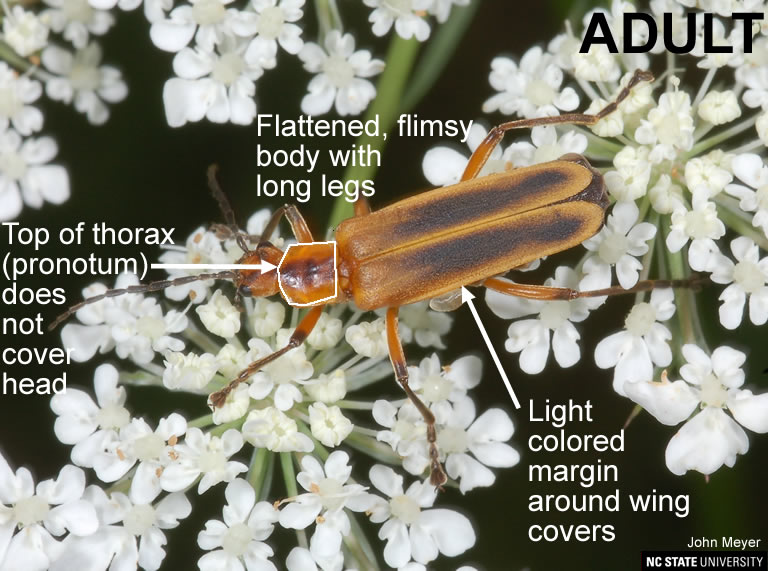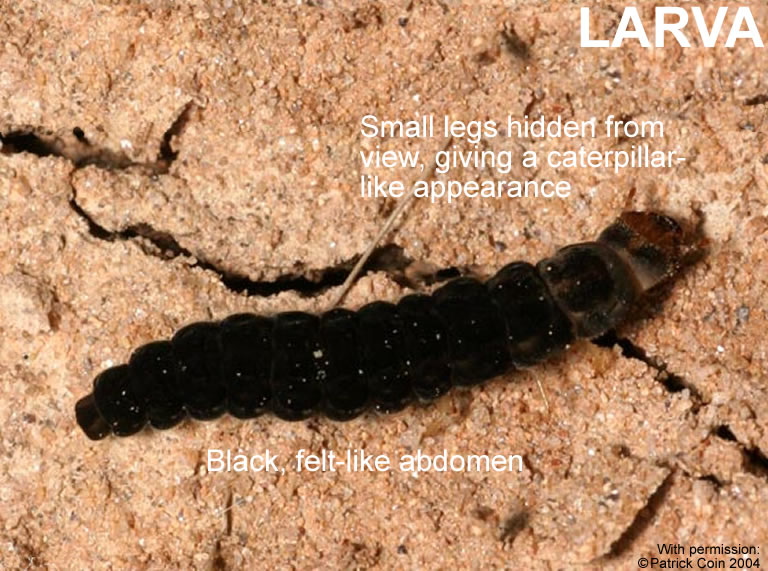Margined Soldier Beetle
go.ncsu.edu/readext?562868
en Español / em Português
El inglés es el idioma de control de esta página. En la medida en que haya algún conflicto entre la traducción al inglés y la traducción, el inglés prevalece.
Al hacer clic en el enlace de traducción se activa un servicio de traducción gratuito para convertir la página al español. Al igual que con cualquier traducción por Internet, la conversión no es sensible al contexto y puede que no traduzca el texto en su significado original. NC State Extension no garantiza la exactitud del texto traducido. Por favor, tenga en cuenta que algunas aplicaciones y/o servicios pueden no funcionar como se espera cuando se traducen.
Português
Inglês é o idioma de controle desta página. Na medida que haja algum conflito entre o texto original em Inglês e a tradução, o Inglês prevalece.
Ao clicar no link de tradução, um serviço gratuito de tradução será ativado para converter a página para o Português. Como em qualquer tradução pela internet, a conversão não é sensivel ao contexto e pode não ocorrer a tradução para o significado orginal. O serviço de Extensão da Carolina do Norte (NC State Extension) não garante a exatidão do texto traduzido. Por favor, observe que algumas funções ou serviços podem não funcionar como esperado após a tradução.
English
English is the controlling language of this page. To the extent there is any conflict between the English text and the translation, English controls.
Clicking on the translation link activates a free translation service to convert the page to Spanish. As with any Internet translation, the conversion is not context-sensitive and may not translate the text to its original meaning. NC State Extension does not guarantee the accuracy of the translated text. Please note that some applications and/or services may not function as expected when translated.
Collapse ▲- Common Name: Margined Soldier beetle
- General Category: Predator
- Taxonomic Classification: Coleoptera: Cantharidae
- Scientific Name: Chauliognathus marginatus
Description
One of two soldier beetles (the other is C. pensylvanicum) commonly seen in the late summer or early fall feeding on nectar and pollen on flowers. They can be quite numerous on flowers and may cause concern for some gardeners. The larvae can also occasionally be found inside fruit such as tomatoes that have already been opened up by splitting, or by other insects such as caterpillars. Neither the adults or larvae damage plants however. The adults are primarily nectar and pollen feeders, but may feed on small insects such as aphids. The larvae are primarily soil-dwelling, and feed on a variety of insect adults, larvae, and eggs. Larvae can survive in very wet conditions due to an exoskeleton that repels water. Neither the adults or larvae will bite.


Identification
Review the images for tips on how to identify these predators.
Adults
Orange-brown and black flattened bodies, about an inch long, with long legs. Look similar to fireflies, but the thorax (pronotum technically) does not cover the head. The dark color pattern on the wing covers can be variable, but they usually have light colored margins.
Larvae
The larvae have a black, velvety appearance and their small legs make them look like caterpillars.
Value in Pest Management
Soldier beetle larvae likely contribute to natural control of a variety of insects, and are therefore a positive component of insect communities. They are not sold commercially.
Origin and Distribution
Native, throughout the United States.
Discover Life – Chauliognathus marginatus


